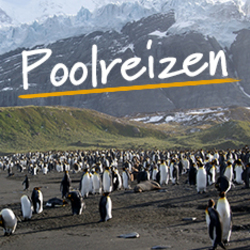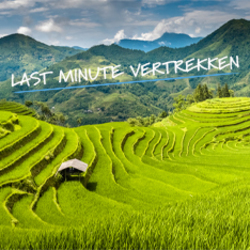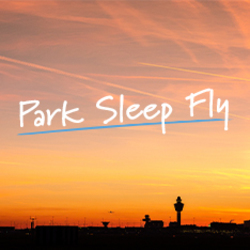Sawadee de nummer 1 in Groepsreizen en Avontuurlijke Reizen
Activities
- Culture
- Natural Wonders
- Culture Bestsellers
- — Experience the immensity of Iceland’s wilderness: fjords, glaciers, volcanos and coasts — Complete the famed Golden Circle: Gullfoss Waterfall, Geysir and Thingvellir National Park — Explore the dramatic scenery of the Snæfellsnes Peninsula — Gaze over Skagafjördur bay from a remote geothermal swimming pool — Choose between 24-hour sunlight in summer or the possibility of seeing the Northern Lights in winter
Food
-
1
Start Reykjavik
Start in Reykjavik, gateway to the wider wonders of Iceland. Depending on when you land, you may have time to visit the Blue Lagoon. Alternatively, explore the city, including the striking modern architecture of the Harpa concert hall and Hallgrímskirkja church. Our welcome briefing takes place tomorrow morning, when we meet out tour leader for the first time. Accommodation: Hótel Klettur (or similar)
-
2
The Golden Circle: Thingvellir, Geysir, Gullfoss
After our welcome briefing at 8.30am, in which we meet the tour leader and discuss the adventures ahead, we drive (45 minutes) inland to Thingvellir, where the world’s first democratic parliament took place. Sitting on a major fault line, it is the best place in Iceland to see the continental drift – the movement of the Eurasian and North American tectonic plates. Here, they are pulling the earth apart as they inch away from each other, causing the land between to subside. Unsurprisingly, the area abounds with waterfalls, immense fissures and the largest lake in the country, which we see on our 45-minute exploration. We then drive (50 minutes) to the world-renowned geysers. Here, we spend 45 minutes (plus an hour for lunch) exploring. The most reliable eruption comes every five to 10 minutes from the 98ft (30m) Strokkur geyser. We then transfer (15 minutes) to Gullfoss, a huge waterfall in a 230ft (70m) deep canyon forged by the Hvita River (White River). Finally, we drive (1hr 40min) to another beautiful waterfall, Gluggafoss, before finishing the day at our hotel. Accommodation: Hótel Fljótshlið or Hótel Drangshlíð (or similar)
-
3
Skógafoss, Dyrhólaey and Jökulsárlón
Drive one hour east to the foot of the infamous Eyjafjallajökull Ice Cap. This area was heavily affected by ashfall during the 2010 eruption and a great deal of ice was melted by the boiling lava. The glacier feeds many beautiful waterfalls, and we visit two of them on a 1hr 30min exploration: Kvernufoss and Skógafoss. Both have rushing water dropping 197ft (60m), and, in the case of Skógafoss, a wall of water rushing down in an 82ft (25m) wide sheet. Continuing east, we cross the black flood plain of Solheimasandur before reaching the green valley of Myrdalur and continuing to Dyrhólaey – a 30-minute journey overall. This 394ft (120m) high promontory is the southernmost point in Iceland. It is rich in bird life and a nesting site for puffins and Arctic terns in spring. On calm days, we might see whales and seals from the promontory. We continue (25 minutes) further east to Vik, the southernmost town in Iceland and a great place to see the Reynisdrangar sea stacks. If time and conditions allow, we see them at closer proximity from Reynisfjara black beach. Then travel further across the Mýrdalssandur and Skeiðarársandur flood plains. Both were formed by countless floods created by volcanic eruptions. We head for Vatnajökull National Park, home to the largest ice cap in Europe (also called Vatnajökull), and then to Jökulsárlón glacier lagoon (a three-hour drive from Vik), where thousands of icebergs are separating from the largest glacier in the country and floating in the pale green sea-level lagoon. Take a one-hour walk beside the waters for excellent views. If conditions allow, head to the black-sand beach where ice chunks are washed onto the shore by the sea, creating wonderful shapes and formations. We then continue (20 minutes) further east, with the steep mountains of Vatnajökull on one side and the exposed south coast on the other, to our accommodation. Accommodation: Guesthouse Gerði (or similar)
-
4
Eastern Fjords and Egilsstadir
Today is a day of scenic driving (5hr 20min in total) with several stops as we travel through fjord country. This stunning mountain region has been sculpted as much by glaciers as volcanic activity. The road winds from one fjord to another, passing a few farms in each fjord where there is enough flat land for hayfields. The birdlife is rich and, in late summer, thousands of moulting whooper swans feed in the sheltered lagoon of Alftafjordur (Swan Fjord). We continue to the town of Egilsstadir. Accommodation: Hótel Valaskjálf or Hótel Hallormsstaður (or similar)
-
5
Studlagil Canyon, Möðrudalur farm, Dettifoss Waterfall and Myvatn
Heading inland and west, we drive (1hr 10min) through the starkly contrasting desert scenery of the northeast highlands and follow the track that takes us to Jokuldalur valley and to Studlagil Canyon, one of the most beautiful canyons of columnar basalt in Iceland, which we explore for 45 minutes. Then, we transfer (1hr 10min) to Möðrudalur farmstead, the highest inhabited farm in Iceland at 469m (1,539ft) above sea level. We have an hour to enjoy the special views from Möðrudalur, which stretch far and wide across the rugged landscape. From Möðrudalur, we drive (1hr 10min) to the enormous Dettifoss waterfall* and walk 0.6mi (1km) to a great vantage point. This is the most powerful waterfall in Europe, bizarrely set in an arid area of sand and rock formations. After, we drive (45 minutes) to the Námafjall goethermal area before driving 30 minutes to Myvatn and the pseudocraters at Skútustaðir. Finally, we head (30 minutes) to our hotel at Lake Myvatn. *The road to Detifoss may not be passable on some winter departures. Your tour leader will assess the local conditions and adapt the itinerary if required. Accommodation: Sel Hótel or Hótel Laxá (or similar)
-
6
Lake Myvatn, Hverfjell, Godafoss, Akureyri
Spend the morning around Lake Myvatn and enjoy a 45-minute walk in Dimmuborgir, a vast area of lava towers and natural arches. Only a short distance from Dimmuborgir is Mount Hverfjall, a huge circular crater that’s 460ft (140m) deep and 3,280ft (1,000m) wide. It is one of the most beautiful craters in Iceland, one which erupted some 2,500 years ago and covered the Myvatn area in tephra (fragments of volcanic rock). It is also thought to be one of the largest on the planet. A little further north is the hot-spring cave known as Grjótagjá, made famous by Game of Thrones. After Myvatn, we head (50 minutes) to the Godafoss waterfall, before travelling (40 minutes) to Akureyri, where the afternoon is free to spend at leisure. Akureyri is a town of 17,000 inhabitants and is the biggest town outside the capital. It is the cultural, commercial and educational centre for northern Iceland and 37mi (60km) south of the Arctic Circle. Akureyri is remarkably green and has the northernmost botanical garden in the world. The Lutheran church in Akureyri is an interesting visit, featuring a stained-glass window thought to have come from a church in London, UK. As with most towns in Iceland there are also thermal baths, enjoyed as much by the locals as by visitors. And if you just fancy a wander, there are plenty of interesting shops, coffee shops and even ice cream parlours. If you would like to book a whale-watching tour for this afternoon (March-October only), please speak to your tour leader at the welcome briefing. Accommodation: Hótel Norðurland or Hótel KEA Akureyri (or similar)
-
7
Siglufjordur, Hofsos, Kolufljufur Canyon
Leave Akureyri and drive around the Troll Peninsula via traditional fishing villages. After 2hr 10m, we stop at the magnificent outdoor swimming pool in the village of Hofsos, with 1hr 30min for an optional quick dip (not included). This remote geothermal swimming pool has some of the best views over Skagafjördur bay. After driving (35 minutes) to the town of Sauðárkrókur for lunch, we transfer (1hr 30min) a little further south to the Víðidalur valley and enjoy a 45-minute stop at beautiful waterfalls in Kolugljúfur canyon, named after a giantess said to have once lived in the area. From Kolugljúfur, we head (25 minutes) to our hotel. Accommodation: Hótel Laugarbakki (or similar)
-
8
Snæfellsnes Peninsula, Vikings and Stykkisholmur
Today, we drive west to the Snæfellsnes Peninsula. After 1hr 15min, we visit a reconstructed Viking house once home to Erik the Red and his son Leif Erikson – the two most famous travelling Vikings. The Eiríksstaðir gives an interesting insight into the life of early settlers and an introduction to the historic tradition of the Icelandic Sagas. From Eiríksstaðir, we transfer (20 minutes) to the village of Búðardalur for lunch, before travelling (1hr 30min) to the fishing village of Stykkishólmur, which we can explore for 45 minutes. We then transfer (40 minutes) to one of the most photographed mountains in Iceland, Kirkjufell, which admire on a 45-minute walk. Finally, we drive (40 minutes) to the southern side of the peninsula to our accommodation on the beach, which has great views over the stratovolcano Snæfellsjökull. Jules Verne, in his classic Journey to the Centre of the Earth, describes this as the start point for the characters’ descent. New Age followers consider this area to be one of the Earth’s seven major energy centres. Accommodation: Langaholt Guesthouse or Kast Guesthouse (or similar)
-
9
Coastal drive to Reykjavik
The exposed coast of the Snæfellsnes Peninsula is the goal for today, and this area has recently been designated a national park. We first drive (15 minutes) to the old church at Budir, one of the most picturesque in the country. Then, we transfer (20 minutes) to the sea cliffs at Arnarstapi, which swarms with birds, before heading (20 minutes) to the rocks of Djúpalónssandur and old shipwrecks in black basaltic sand. Our tour leader will tell us about the old cod-fishing methods, while towering above us is the Snæfellsjökull volcano. Some of the best fisheries are on the peninsula and whales can often be seen from shore on calm days. After driving (35 minutes) to Ólafsvík for lunch, we transfer (2hr 45min) to our hotel in Reykjavik. Accommodation: Hótel Klettur (or similar)
-
10
End in Reykjavik
Our trip ends in Reykjavik after breakfast. You can catch a Flybus transfer to the airport for your return flight. Alternatively, if you’d like a bit longer to explore this invigorating city, speak to your sales representative about extending your stay.































